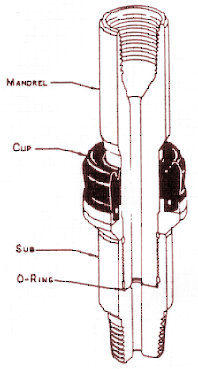

The timing of your drills must cover a range of different operations, including drilling with a diverter, on-bottom drilling, and tripping. You must conduct each drill during a period of activity that minimizes the risk to operations. Your drill must familiarize personnel engaged in well operations with their roles and functions so that they can perform their duties promptly and efficiently as outlined in the well-control plan required by § 250.710. You must conduct a weekly well-control drill with all personnel engaged in well operations. § 250.711 - What are the requirements for well-control drills? You must post a copy of the well-control plan on the rig floor. You must keep a copy of your well-control plan on the rig at all times, and make it available to BSEE upon request.

Each well-control plan must contain instructions for personnel about the use of each well-control component of your BOP, procedures that describe how personnel will seal the wellbore and shear pipe before maximum anticipated surface pressure (MASP) conditions are exceeded, assignments for each crew member, and a schedule for completion of each assignment. You must prepare a well-control plan for each well. The date and time of safety meetings must be recorded and available at the facility for review by BSEE representatives. You must instruct your personnel regarding the safety requirements for the operations to be performed, possible hazards to be encountered, and general safety considerations to protect personnel, equipment, and the environment as required by subpart S of this part. Prior to engaging in well operations, personnel must be instructed in: (f) Use equipment that has been designed, tested, and rated for the maximum environmental and operational conditions to which it may be exposed while in service. (e) Use and maintain equipment and materials necessary to ensure the safety and protection of personnel, equipment, natural resources, and the environment and (d) Use personnel trained according to the provisions of subparts O and S of this part (c) Ensure that the toolpusher, operator's representative, or a member of the rig crew maintains continuous surveillance on the rig floor from the beginning of operations until the well is completed or abandoned, unless you have secured the well with blowout preventers (BOPs), bridge plugs, cement plugs, or packers (b) Have a person onsite during operations who represents your interests and can fulfill your responsibilities (a) Use recognized engineering practices to reduce risks to the lowest level practicable when monitoring and evaluating well conditions and to minimize the potential for the well to flow or kick You must take the necessary precautions to keep wells under control at all times, including:


 0 kommentar(er)
0 kommentar(er)
